Find relief from painful migraines with these gentle yoga poses and breath techniques.
A migraine isn’t merely a headache. People who suffer from this recurrent disorder often report symptoms like nausea, vomiting, light sensitivity and even abdominal cramps. (1) While no one knows exactly what causes migraines, common triggers include changes in weather, sleep disruptions, certain foods or drinks, caffeine, anxiety, and stress.
While migraines are typically treated with anti-nausea drugs and pain relievers, yoga can offer natural treatment. Studies have shown that yoga can help reduce frequency and intensity of migraines by lowering the heart rate and blood pressure, which in turn helps to treat stress, depression and insomnia. (2, 3)
Suffering from a sore neck, back and shoulders? Get our mobility guide to ease pain and soreness.
Get The FREE Mobility Guide To Fix Your Pain Today!
The relaxation techniques of yoga help to calm the nervous system, activating the body’s parasympathetic – or rest and digest – nervous system (PNS). Bringing the body into a parasympathetic state helps to reduce the activities in the brain that can lead to migraines.
It has also been shown that the physical movement of yoga has a positive impact on serotonin levels in the brain. (4) This is important to migraine sufferers, as low serotonin constricts and dilates blood vessels, which can lead to another episode.
Use the following breathing exercises and yoga poses to bring the body into an increased parasympathetic state, calming the mind and the body.
Bhramari Pranayama (Bee Breath) | 8 breaths
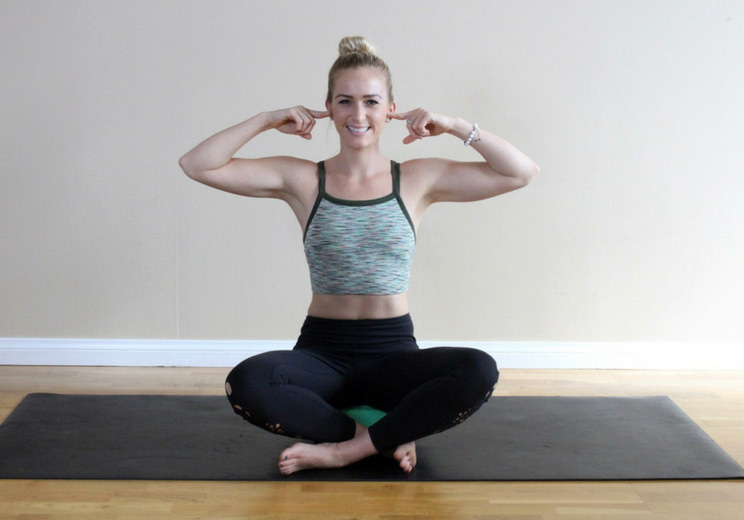
This breathing exercise helps to quickly release anxiety, agitation, or frustration that can cause or be caused by migraines.
- Begin in a comfortable seat with your eyes closed.
- Place the index fingers on the cartilage right between the cheek and the ears.
- Take a deep breath in. Then press down on the cartilage of your ears as you exhale and make a loud humming sound like a bee.
- Continue for 8 rounds of breath.
Wave Breath (3-Part Breath) | 8 breaths
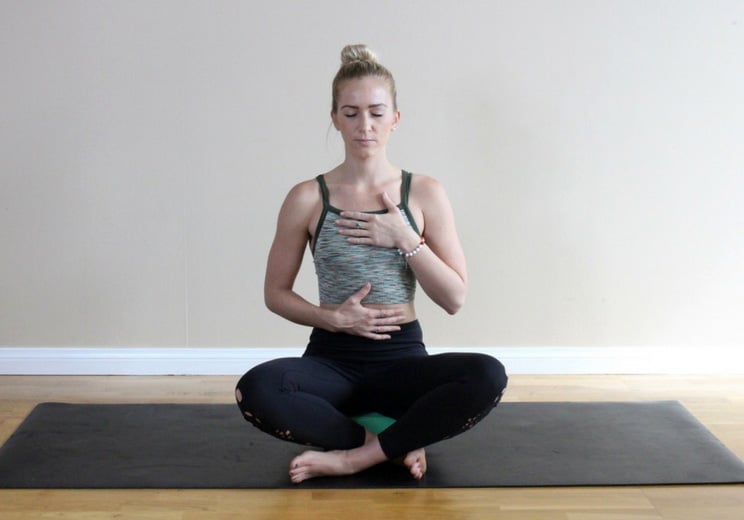
This calming and relaxing breathing technique helps you visualize bringing the breath into three parts of your body, helping to focus the mind and decrease stress.
- Begin in a comfortable seat. If your hips are tight, sit on a yoga block.
- Place one hand on your thigh and the other over your belly.
- Begin to take a slow breath in through your nose, first filling up your lower belly. Then continue to inhale into your lower chest, then all the way up into your lower throat. Pause for a moment at the top of your inhale.
- Start exhaling slowly, first through the lower throat, then your lower chest, and then your lower belly until all of the breath is out.
- Continue for 8 rounds of breath, feeling the wave of breath move up and down your torso. The breath should be continuous as you inhale and exhale through your nose.
Embryo’s Pose | 8 breaths
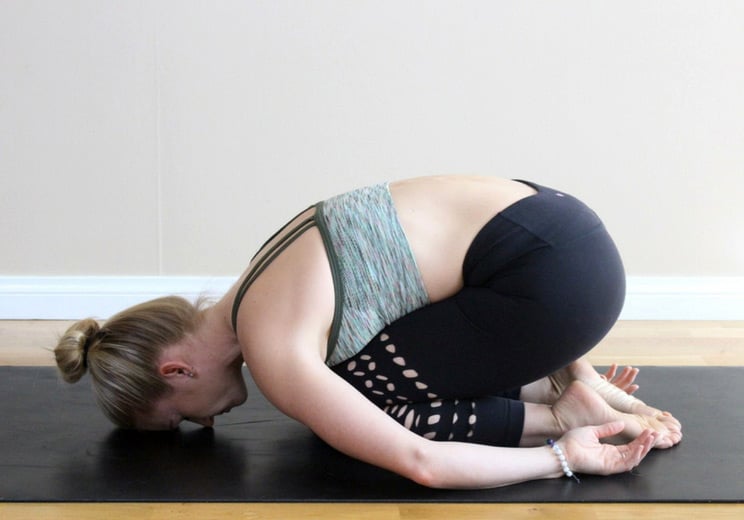
This calming pose helps to increase the body’s parasympathetic state, decreasing stress and migraines.
- Start on your hands and knees in a tabletop position.
- Bring your legs all the way together, then sit your hips back onto your heels.
- Lower your chest onto your thighs and bring your forehead to rest down on your mat.
- Reach your arms back towards your feet, resting with your palms face up.
- Close your eyes and relax for 8 slow inhales and exhales.
Cat Cow | 8 breaths
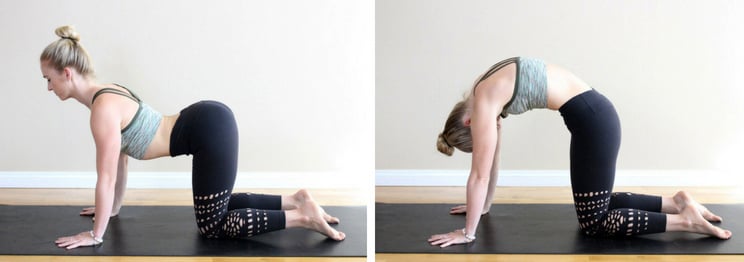
The movement of this pose helps to increase serotonin levels in the brain while also warming the spine to relieve tension in the upper back, shoulders, and neck.
- Begin in a tabletop position on your hands and knees. Stack your shoulders over your wrists and your hips over your knees.
- Take an inhale and tilt your tailbone towards the sky, lowering your belly towards the floor to come into cow pose. Squeeze your shoulder blades together and keep your neck long.
- Exhale, then round your spine and tuck your chin to come into cat pose. Draw your navel up and in while gazing towards your belly.
- Continue flowing between your cow and cat pose for 8 rounds of breath.
Easy Pose with Eagle Arms | 8 breaths per side
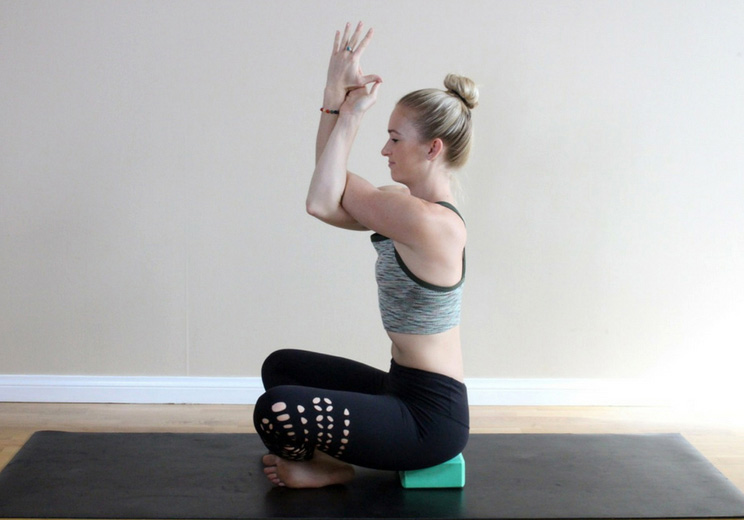
This pose helps to relieve tension in the upper back and shoulders that can lead to migraines.
- Begin in a comfortable crossed-legged seat, sitting on a block if your hips feel tight.
- Reach your arms out to a T, then exhale and cross your right arm under your left in front of your chest.
- Wrap your right forearm around your left to bring your palms to touch. Then lift your elbows in line with your shoulders and press your forearms forward to feel a stretch through the upper back and shoulders.
- Hold for 8 slow breaths, then switch sides by taking the left arm under the right.
Head-to-Knee Pose | 8 breaths per side
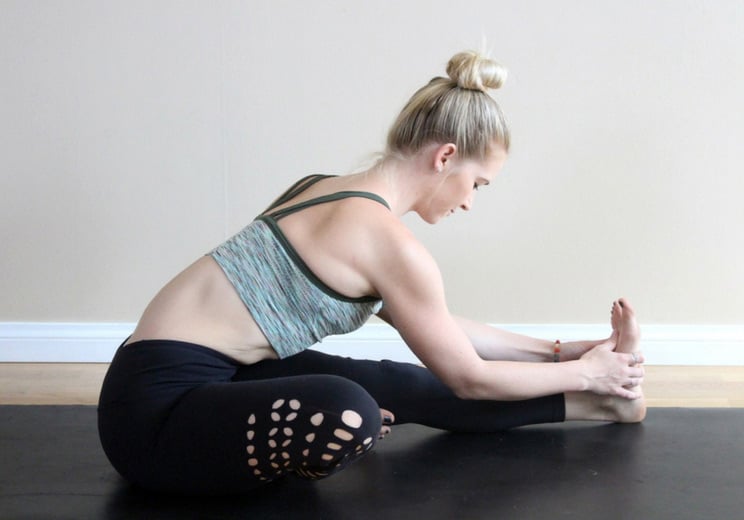
This forward fold helps move blood into the brain, encouraging a parasympathetic state and relieving tension in the hips, back, and neck.
- Start seated on your mat with your legs straight out in front of you.
- Bend your left knee and place your left foot on the inside of your right thigh. Flex your right foot.
- Inhale to reach your arms above your head and square your chest off over your right leg.
- Exhale as your fold over your right thigh, reaching towards your foot. Try to get your belly to rest on your thigh, bending your knee as much as you need to.
- Hold for 8 breaths, then switch legs.
Hero Pose Neck Release | 8 breaths per side
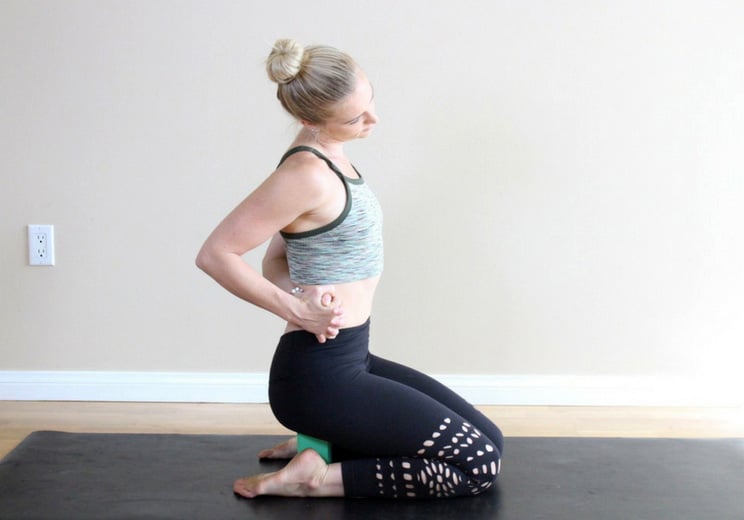
This pose relieves tension in the neck and shoulders that can lead to migraines.
- Kneel on your mat with your knees hip-width distance apart.
- Place a block between your feet on the medium height, then sit your hips back onto the block.
- Interlace your hands behind your lower back, trying to bring the heels of your palms to touch.
- Place your interlaced hands next to your right hip and point your right elbow straight back behind you.
- Exhale and lower your right ear towards your right shoulder.
- Roll your chin down an inch and then back up, taking small half circles. Pause when you feel a point of tension.
- Hold for 8 breaths, then switch sides.
Supported Bridge | 8 breaths
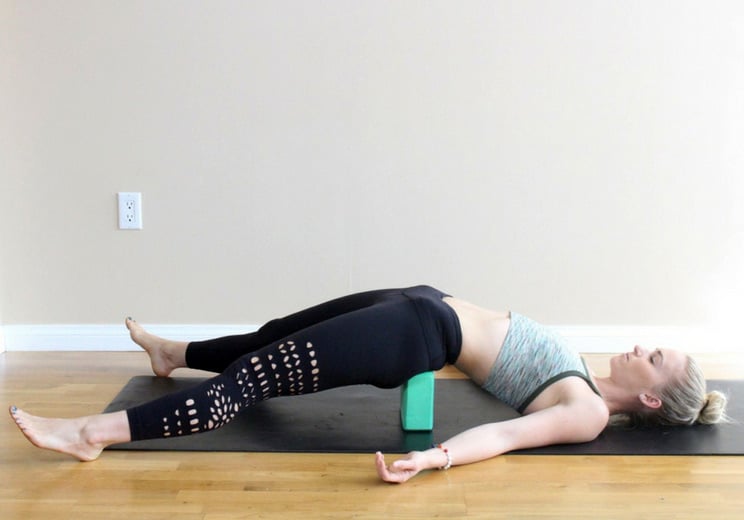
This pose brings the body into a parasympathetic state and brings blood flow towards the brain.
- Lie on your back with your knees bent and your feet on the ground. Keep a block nearby.
- Place your arms down alongside your body with your palms face down. Keep your feet hip-width distance and walk them close to your body.
- Inhale as you press your palms into the ground and lift your hips up towards the ceiling.
- Grab your block and slide it underneath your sacrum, then lower your hips to rest down on it.
- Straighten your legs and let your toes fall out wide. Place your arms down alongside your body with your palms facing up.
- Close your eyes and hold for 8 slow breaths.
Gentle Supine Twist | 8 breaths per side
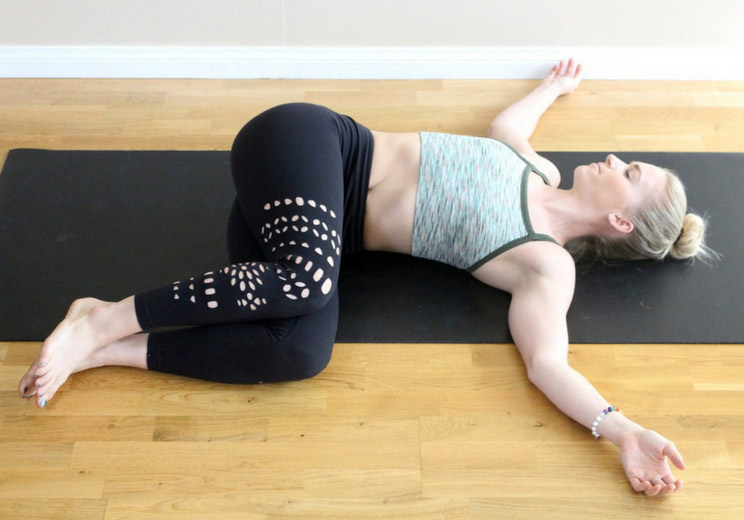
This pose helps to calm the nervous system and relieves tension in the shoulders and back.
- Lie on your back with your knees drawn in towards your chest.
- Cactus your arms out by your sides with your palms facing up and parallel your shins to your mat, bringing your knees to 90-degree angles.
- Inhale, then exhale as you slowly lower your knees to the left side of your mat.
- Hold for 8 breaths, then draw your knees back to center.
- Hug your knees into your chest for a breath, then twist to the right on an exhale. Hold for 8 breaths.
Savasana (Corpse Pose) | 3-5 minutes
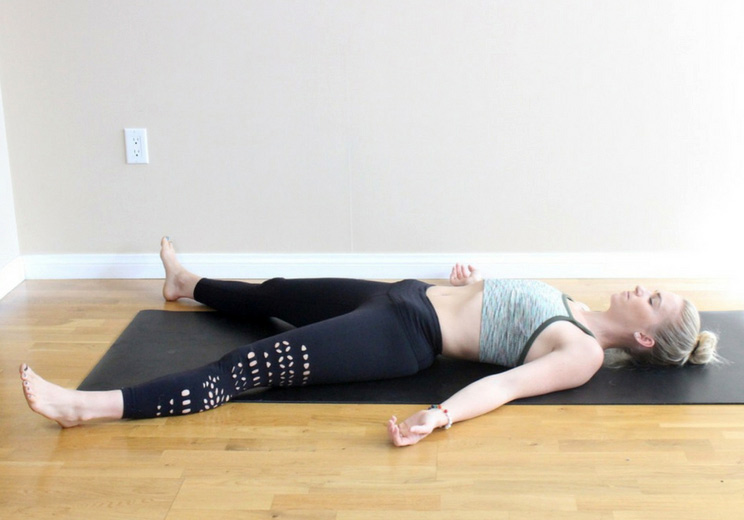
Savasana allows you to completely relax and de-stress, bringing the body into an increased parasympathetic state.
- Lie flat on your mat with your legs long and your feet out wide. Let your toes fall outward.
- Bring your arms down alongside your body with your palms face up.
- Close your eyes and take a few deep breaths. Find a natural breath and allow your mind and body to relax.
- Rest in this pose for 3-5 minutes.

(Your Next Workout: The 5 Best Yoga Poses to De-Stress)


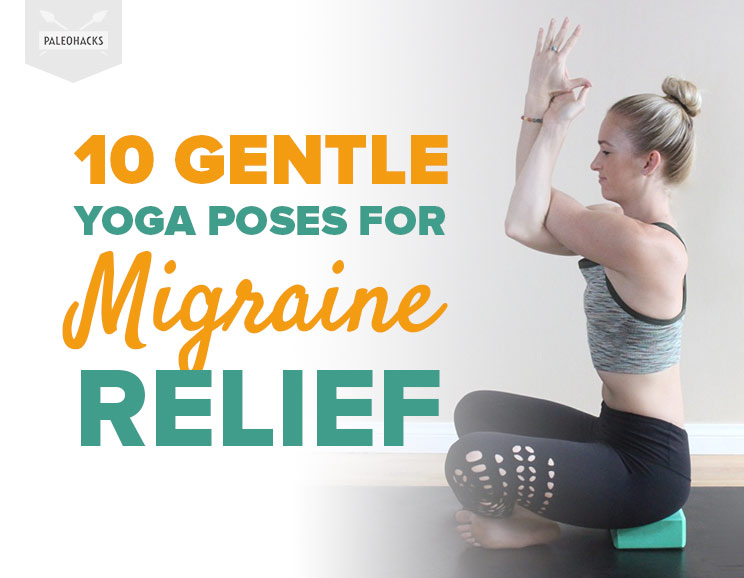
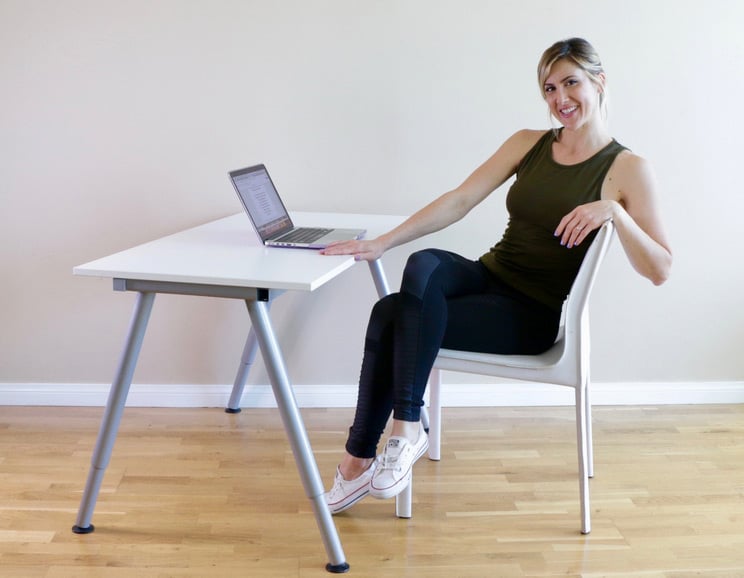 9 Seated Stretches to Release Neck + Back Pain
9 Seated Stretches to Release Neck + Back Pain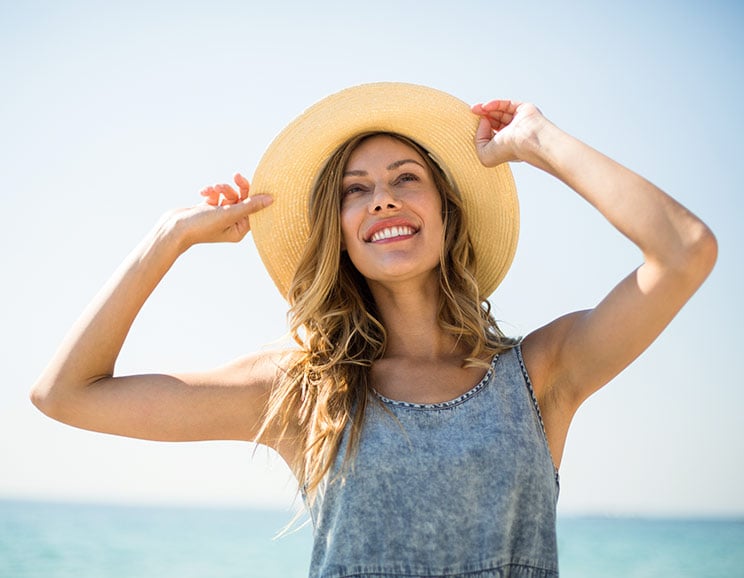
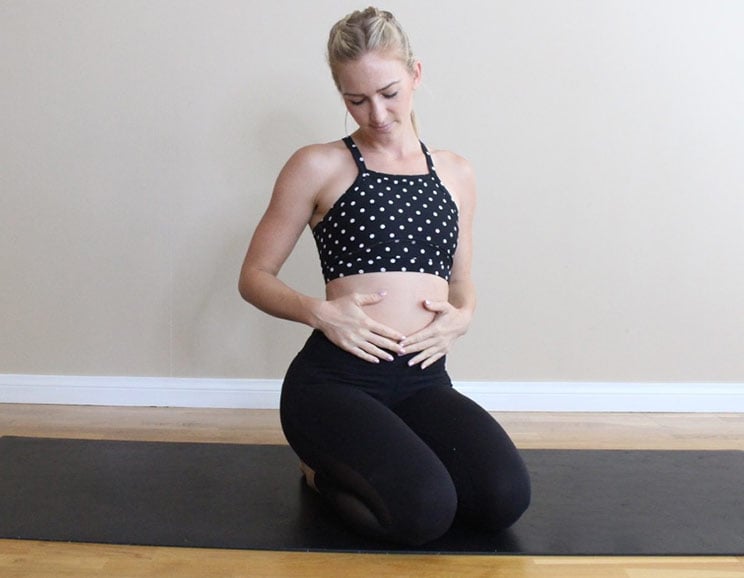
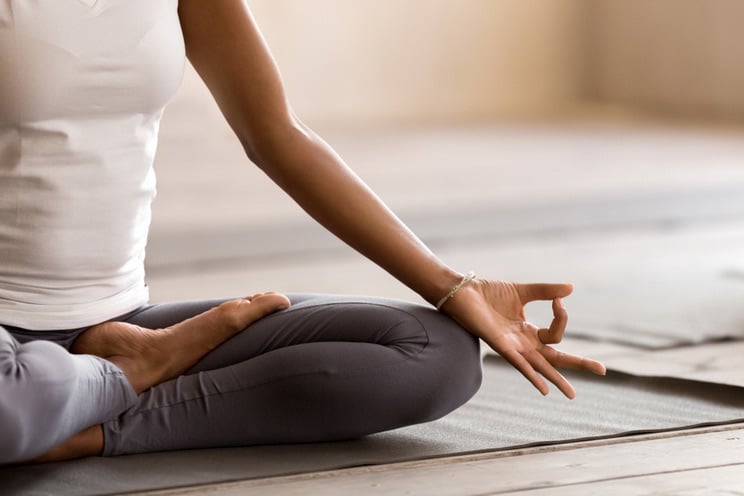
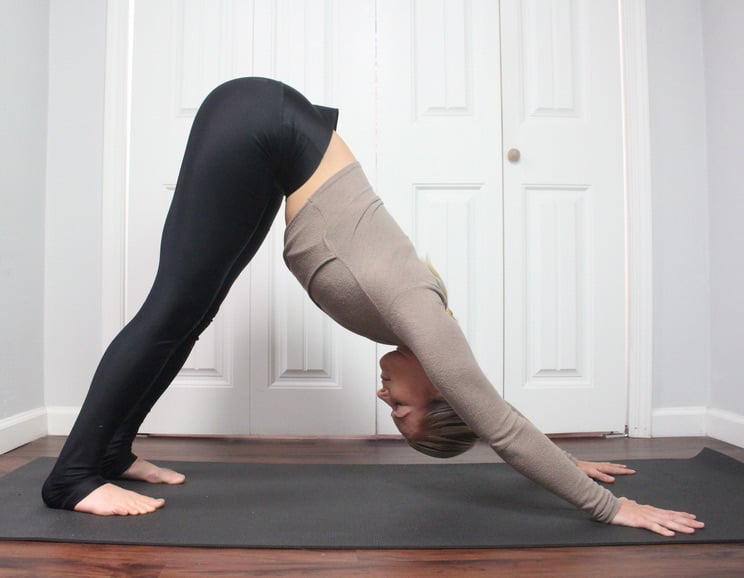
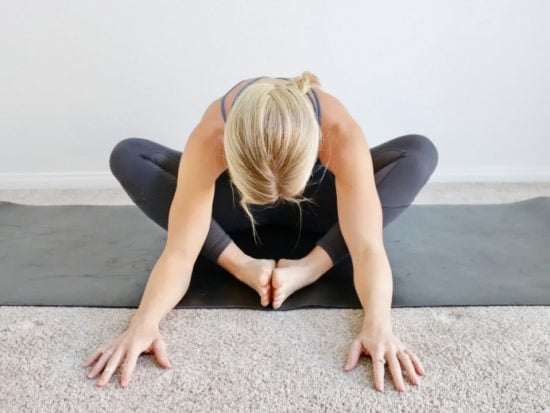
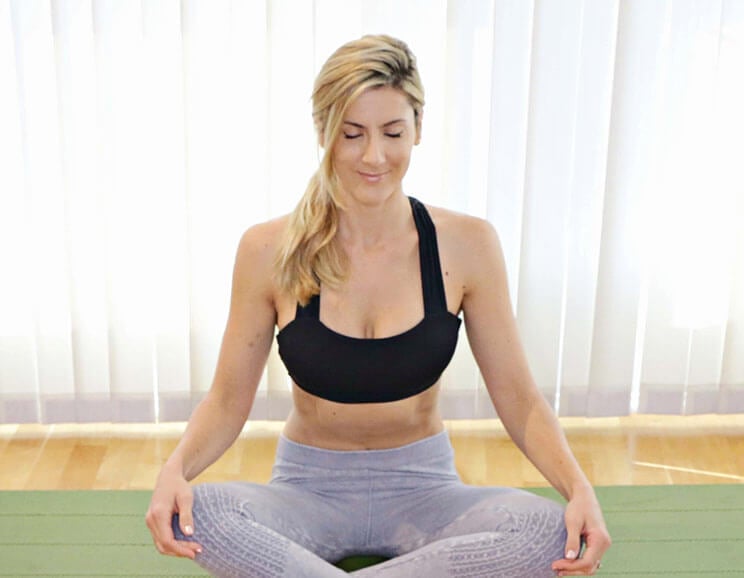

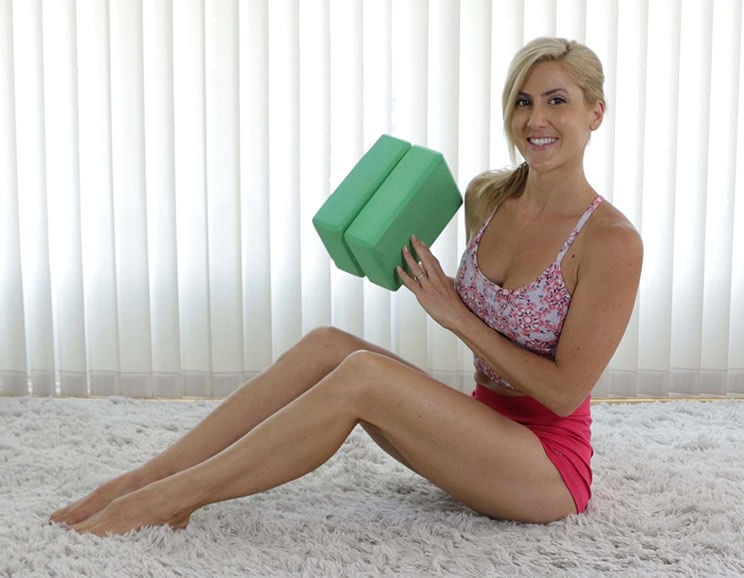
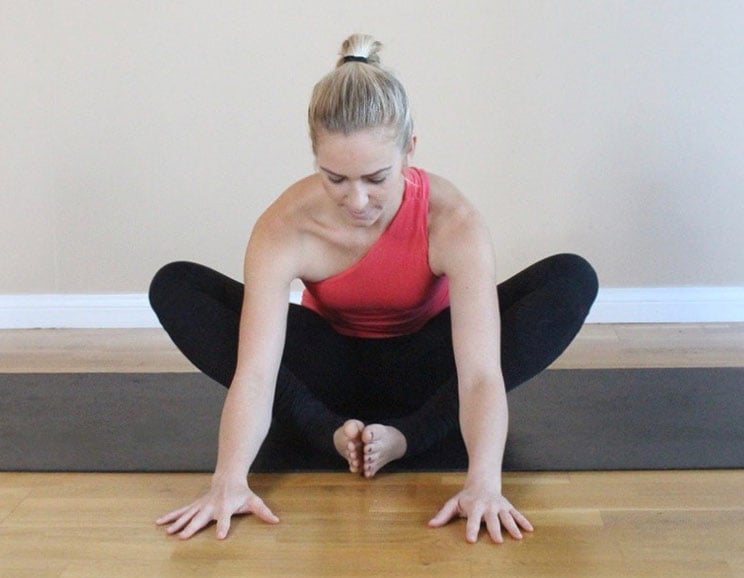
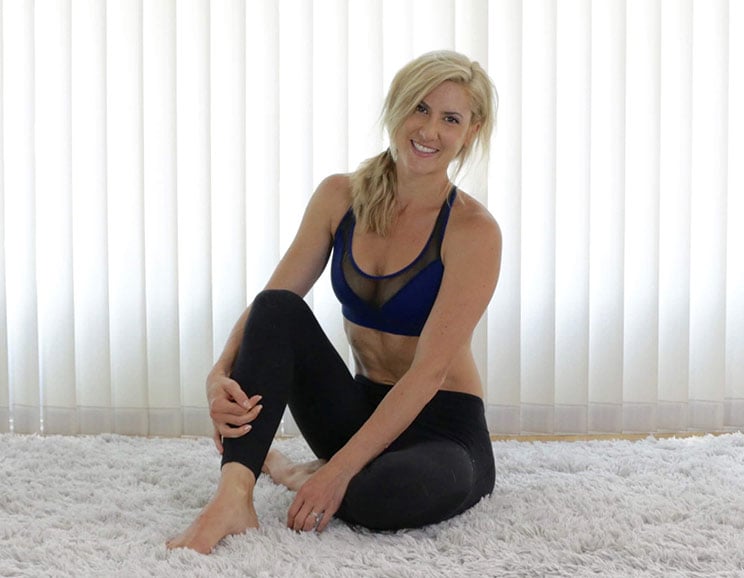
Show Comments